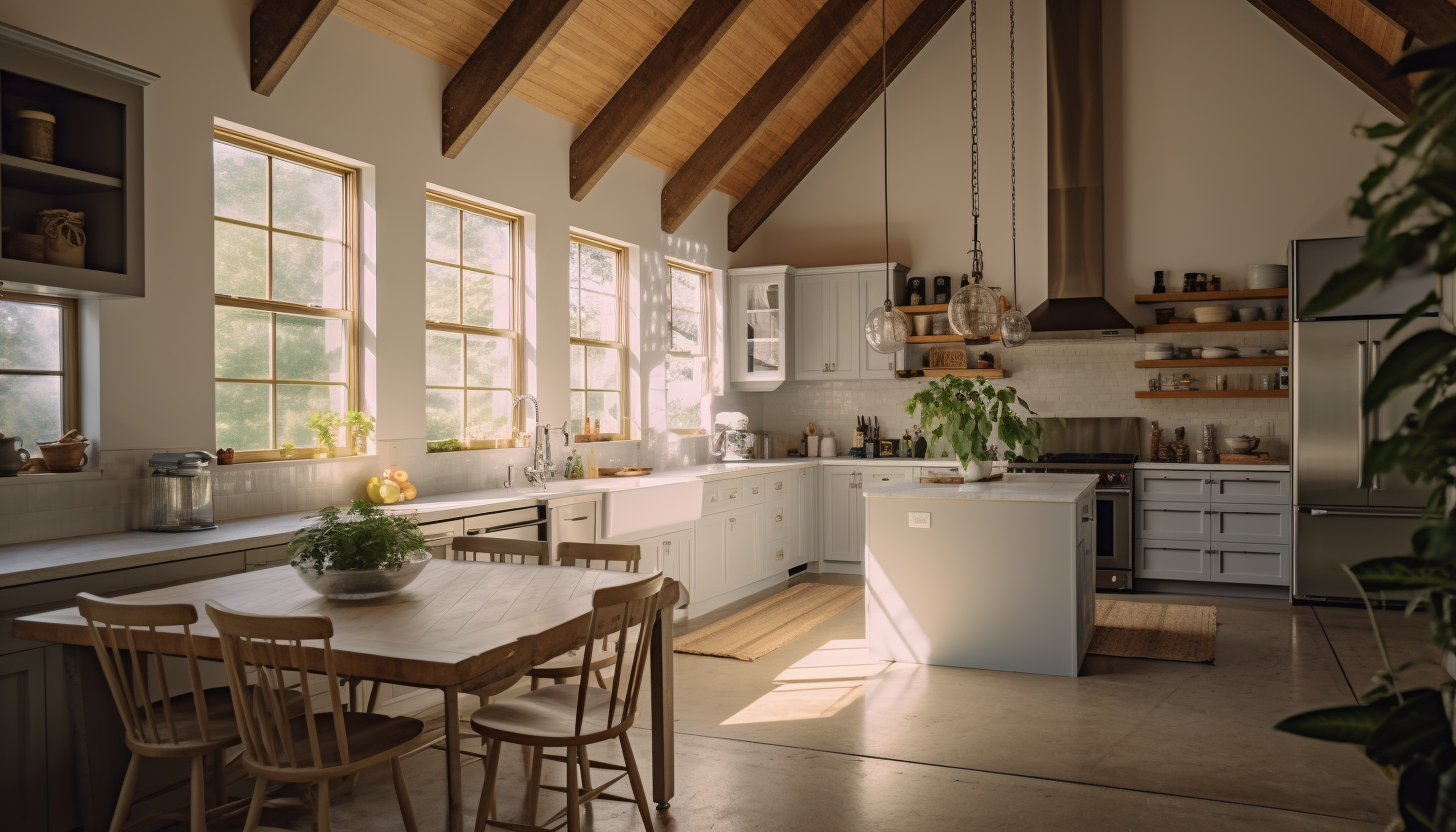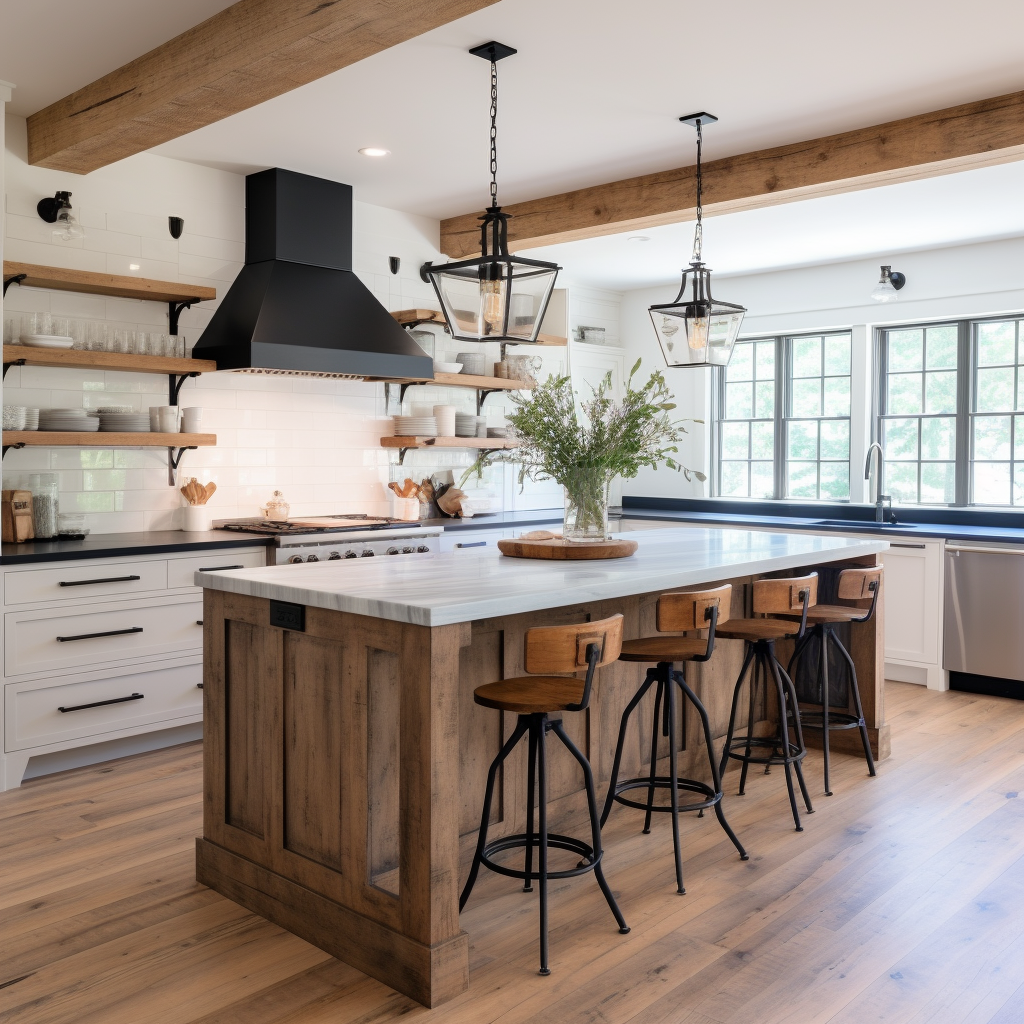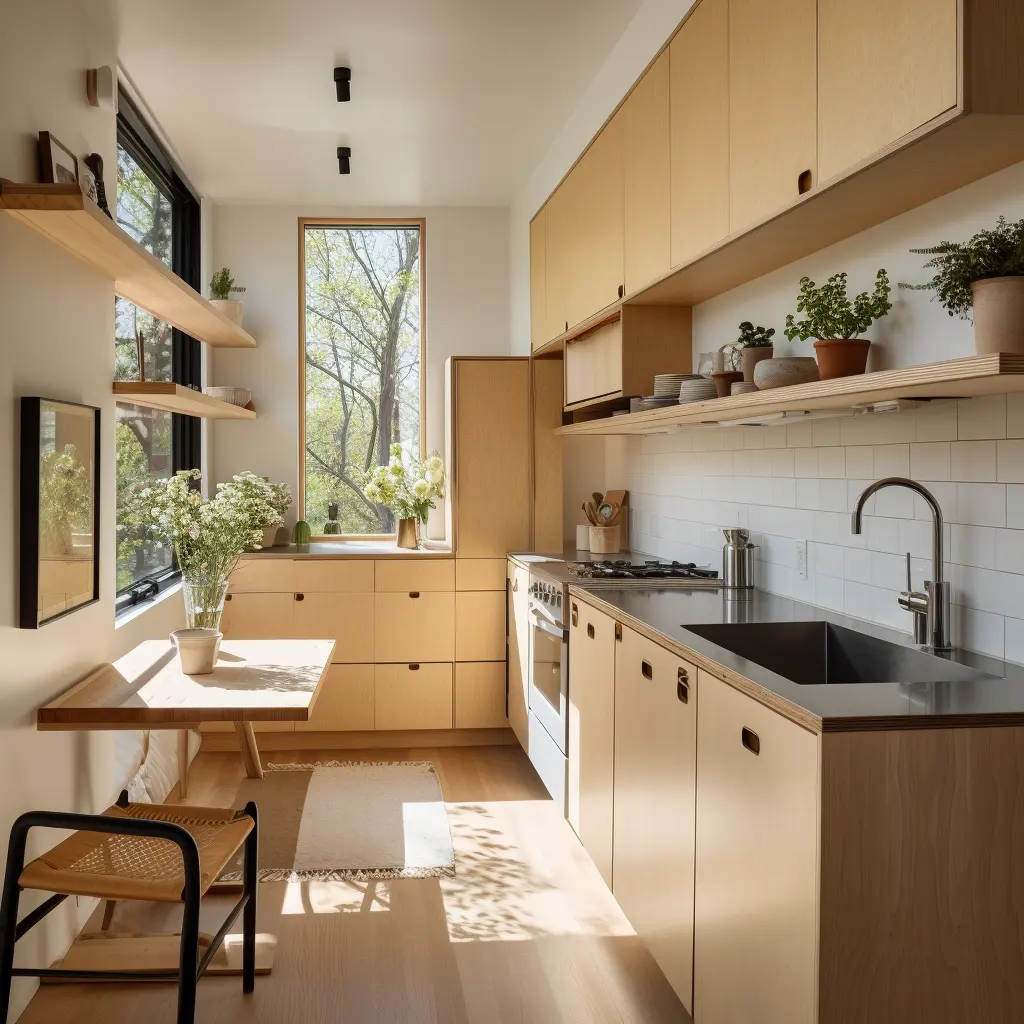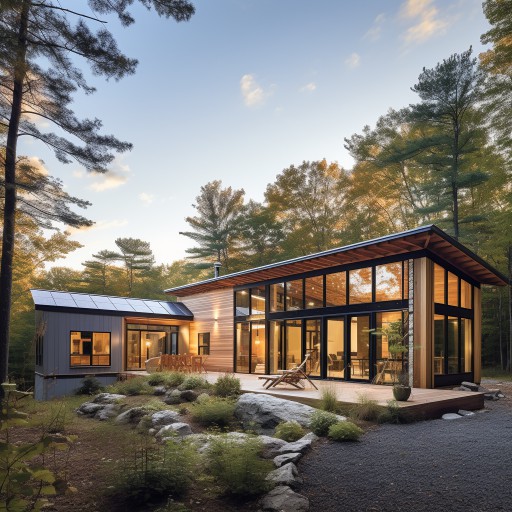Eco-Chic: A Guide to Sustainable Kitchen Remodels

co-founder
- 1. Select Sustainable Materials:
- 2. Invest in Energy-Efficient Appliances:
- 3. Optimize Lighting:
- 4. Conserve Water:
- 5. Efficient Storage Solutions:
- 6. Choose Eco-Friendly Flooring:
- 7. Use Environmentally Friendly Finishes:
- 8. Implement Waste Reduction Strategies:
- 9. Incorporate Indoor Plants:
- 10. Plan for Longevity:
Kitchens hold a special place in our homes, providing the backdrop for some of our most favorite moments and memories. With the ever-growing awareness of environmental issues, it is both practical and gratifying to embrace eco-friendly and sustainable options in your kitchen remodel. Rest assured, going green does not mean sacrificing style or function. Let us embark on this journey to remodel a kitchen that marries elegance with sustainability. (Sign up to EcoHome today to get started. You can scope out your build, figure out the costs, and find a green contractor who shares your vision.
A kitchen is considered eco-friendly and sustainable when its design, materials, appliances, and practices contribute to reducing environmental impact and promoting a healthier living space. Here’s what makes a kitchen eco-friendly and sustainable:

1. Select Sustainable Materials:
Cabinetry: Opt for cabinetry made from reclaimed or sustainably-sourced wood, such as bamboo. Bamboo, particularly, is renowned for its rapid growth and durability. Furthermore, consider using low-VOC (Volatile Organic Compounds) adhesives and finishes, as they significantly improve indoor air quality.
 Countertops: Make a statement with environmentally friendly countertops. Options such as recycled glass or composite surfaces are not only striking but also durable and sustainable. It's worth doing some investigation into whatever you end up choosing though. For instance, while granite countertops have some eco-friendly properties such as durability and natural origin, there are environmental concerns associated with their extraction, processing, and transportation. If you are considering granite for its aesthetic and durability but want to make an eco-friendly choice, it might be worth looking into sourcing granite that’s been responsibly quarried and is local to reduce transportation emissions.
Countertops: Make a statement with environmentally friendly countertops. Options such as recycled glass or composite surfaces are not only striking but also durable and sustainable. It's worth doing some investigation into whatever you end up choosing though. For instance, while granite countertops have some eco-friendly properties such as durability and natural origin, there are environmental concerns associated with their extraction, processing, and transportation. If you are considering granite for its aesthetic and durability but want to make an eco-friendly choice, it might be worth looking into sourcing granite that’s been responsibly quarried and is local to reduce transportation emissions.
2. Invest in Energy-Efficient Appliances:
Incorporating energy-efficient appliances is vital for a green kitchen. Look for the ENERGY STAR rating, which guarantees energy efficiency. Refrigerators: Modern refrigerators come equipped with impressive energy-saving technologies. Search for models with the highest energy-efficiency ratings. Dishwashers: Opt for dishwashers with water-saving features and eco-modes that reduce energy and water consumption. Oven and Stove Consider induction cooktops, which are known for their energy efficiency and safety features.
3. Optimize Lighting:
It goes without saying, but we'll say it anyway. Choose LED lights to brighten your kitchen. They consume significantly less energy than traditional bulbs and have a longer lifespan. Depending on your kitchen, optimizing for natural lighting is also worth it. It will make all of your fancy meals look all the better in photos!
Implement smart lighting systems that you can control and program to ensure lights are only used when necessary.
4. Conserve Water:
Water conservation in an eco-friendly kitchen is essential as it helps to minimize the wastage of a valuable resource and can also reduce energy consumption and utility bills. There are several methods and considerations to keep in mind to achieve water conservation in the kitchen:
Efficient Faucets and Fixtures: Installing a low-flow faucet can be a simple yet effective way to reduce water usage. A faucet aerator can be added to the existing faucet to mix air with water, reducing the amount of water that flows through without a noticeable difference in pressure. If you're really feeling fancy, consider installing a foot-operated faucet control which can further reduce water wastage by ensuring the tap is only running when necessary.
Greywater Systems: Depending on your home and the scope of your remodel, implementing a greywater system can be highly beneficial. These systems allow you to reuse water from sinks for other purposes, such as irrigation or toilet flushing.
5. Efficient Storage Solutions:
Sustainable Containers: Opt for glass or stainless steel containers for food storage. These materials are durable and free from harmful chemicals. Produce Bags: Utilize organic cotton bags for storing produce. These bags are reusable and prevent unnecessary waste.

6. Choose Eco-Friendly Flooring:
Select sustainable flooring materials. Consider cork, reclaimed wood, bamboo, or linoleum. These materials are not only eco-friendly but also comfortable and aesthetically pleasing.
7. Use Environmentally Friendly Finishes:
Use low-VOC or VOC-free paints and finishes. These options contribute positively to indoor air quality and are better for the environment.
8. Implement Waste Reduction Strategies:
Equip your kitchen with a designated recycling and composting station. These stations will encourage the responsible disposal of waste. Design with this mind. A little bit of forethought will make dealing with food waste more second nature than a chore.
9. Incorporate Indoor Plants:
Adding plants to your kitchen not only enhances the aesthetic appeal but also improves air quality. Select indoor plants that thrive in kitchen environments.
10. Plan for Longevity:
When making choices for your kitchen remodel, think long-term. Invest in high-quality materials and appliances that will withstand the test of time, reducing the need for future replacements and, consequently, waste.
Crafting a kitchen that is both elegant and eco-friendly is an achievable feat. By making mindful choices in materials, appliances, and practices, you can create a space that is not only stunning but also has a positive impact on the environment. Your kitchen will be a testament to the harmony that can exist between luxury and sustainability.

Renovate with EcoHome
EcoHome empowers homeowners to confidently build healthy and comfortable homes for a fair price.
Sign UpLocations View All →
NY
- Albany
- Binghamton
- Buffalo
- Esopus
- Freeport
- Hempstead
- Highland
- Kingston
- Long Beach
- Marlboro
- Mount Vernon
- New Paltz
- New Rochelle
- New York City
- Niagara Falls
- North Tonawanda
- Olivebridge
- Plattekill
- Rochester
- Rome
- Saugerties
- Schenectady
- Shandaken
- Syracuse
- Troy
- Utica
- Valley Stream
- Wallkill
- Woodstock
- Yonkers
NJ
- Bayonne
- Brick
- Camden
- Cherry Hill
- Clifton
- East Orange
- Edison
- Elizabeth
- Jersey City
- Lakewood
- Middletown
- Newark
- Old Bridge
- Passaic
- Paterson
- Toms River
- Trenton
- Union City
- Woodbridge
CT
PA
- Allentown
- Altoona
- Bethel Park
- Bethlehem
- Chester
- Easton
- Harrisburg
- Hazleton
- Lancaster
- Lebanon
- Monroeville
- Philadelphia
- Pittsburgh
- Reading
- Scranton
- Wayne
- Wilkes Barre
MD
- Abingdon
- Baltimore
- Bethesda
- Bowie
- Columbia
- Dundalk
- Ellicott City
- Frederick
- Gaithersburg
- Germantown
- Glen Burnie
- Potomac
- Rockville
- Severn
- Silver Spring
- Towson
- Waldorf



